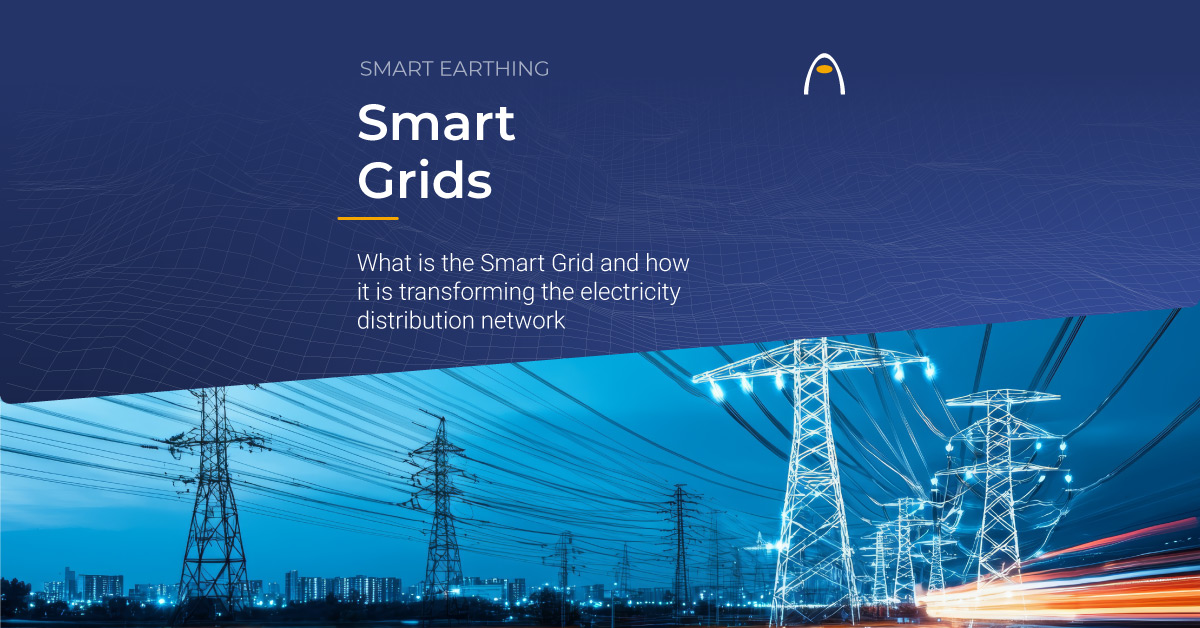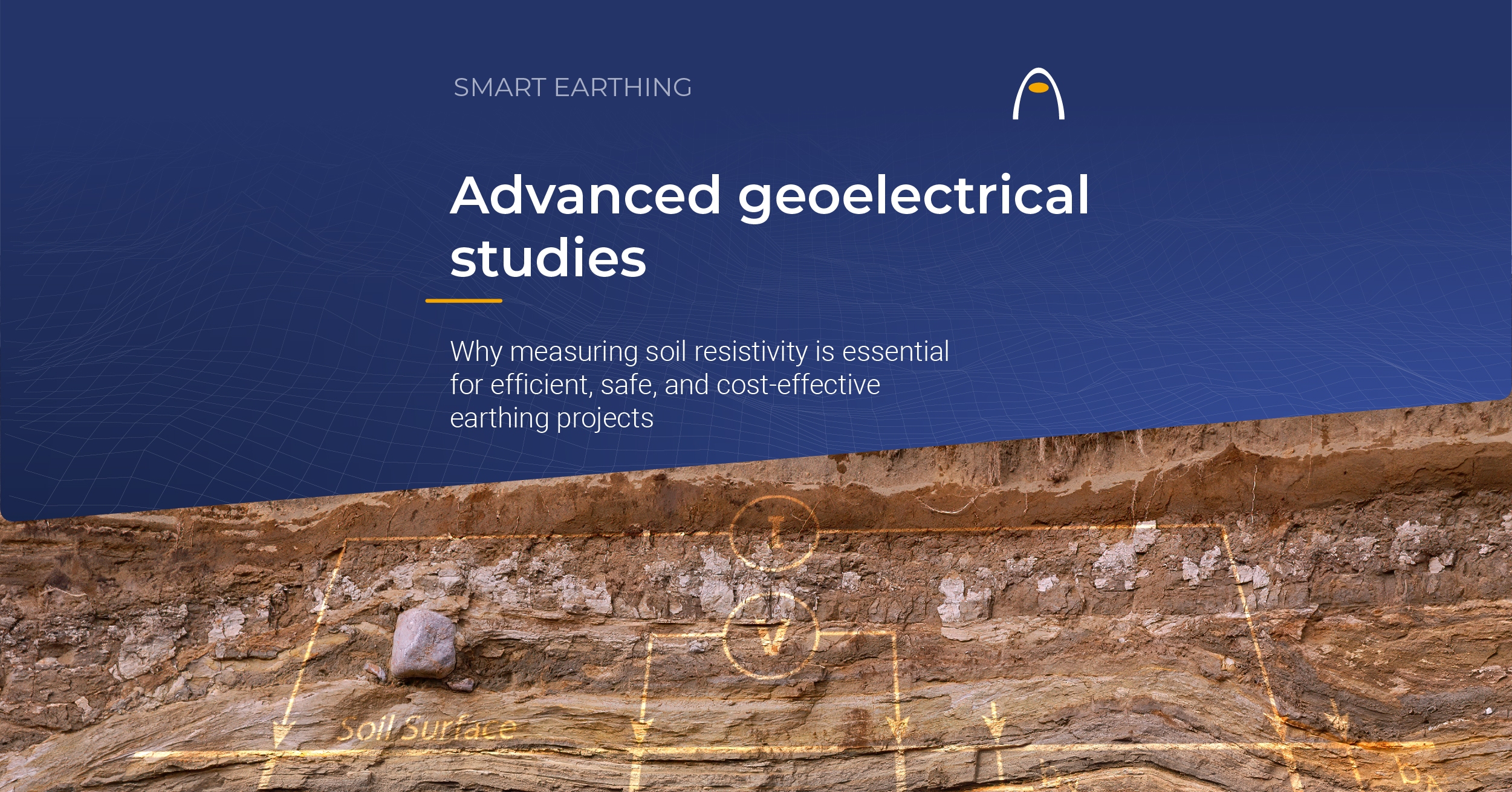The function of the earthing in an electrical installation is to dissipate in the terrain the currents of any nature that can originate, either from fault currents, at industrial frequency or due to atmospheric discharges.
The circulation of currents through earthing can cause the appearance of potential differences between certain points. For example, between the installation of earthing and the surrounding land, or between two points of it. The earthing system must be designed so that, even with the appearance of important potential differences, safety for people and the installation can be guaranteed.
For proper operation, fulfilling any of the above functions, the grounding system must have a low resistance so that there is no excessive voltage increase.
The geoelectrical study of the subsoil makes it possible to establish the optimum configuration of the earthing system to be designed. The ground resistivity measurement makes it possible to determine the layout, depth, number and type of elements necessary according to safety and functional requirements.
About lightning protection systems, it is also essential to ensure good dispersion of the current in the ground. Upon receiving the lightning current, the accumulated energy causes large potential differences in the ground, even capable of electrocuting a person because of the difference in potential between their feet.
Earthing: Why is a correct grounding installation so important?
Grounding is essential in an electrical installation to ensure safety and avoid serious consequences to people and equipment. A correct connection to the physical earth provides the currents with a safe route and prevents these currents from finding unwanted routes that could cause damage.
Incorrect grounding installation means a risk to people
This potential difference between two points on the surface, specifically between the two separate feet of a person, is called “step voltage”. In addition to this voltage, there is also the so-called “contact voltage”, which is the difference in potential that a person supports when they are in contact with an electrode, equipment or metallic part in tension and their feet are on an uninsulated surface.
These potential differences give rise to a current that circulates through the body, causing important injuries. The damage that a person can suffer depending on the intensity of the current flowing through his body is studied in the case of industrial frequency (the usual power supply):
- With an effective intensity of 3-15 mA, difficulty in movement is observed in the human body, even reaching the contraction and seizure of the muscles (tetanization).
- With an intensity of 15-25 mA and contact of minutes, breathing difficulties and contractions are observed.
- With an intensity of 25-50 mA and a contact of seconds strong tetanization, cardiac alterations and unconsciousness are observed.
- With an intensity between 50-5000 mA, ventricular fibrillation and the onset of electrocution occur in the human body.
- With an intensity higher than 5000 mA, irreversible cardiac arrest and burns occur.
In the case of lightning current, the duration is much shorter. However, taking into account that the lightning current reaches peaks in the order of tens of kiloamperes (10,000,000 mA), a small part can cause significant damage.
Adequate grounding system to protect facilities
A correct earthing system allows protection of the installations giving a path of low impedance. An electrical installation without grounding, or with an inadequate installation, puts at risk the electrical equipment, the wiring and the electrical panels, being able to cause heating that triggers a fire.
Improve signal quality by minimizing electromagnetic noise
In industrial electrical installations, the lack of adequate grounding can cause electromagnetic noise. The possible consequences are failures in the measurements of the sensors, resetting of the computers, loss of communications, etc.
Establish a reference potential equipotentializing the system
If the grounding fails as a reference voltage in the electrical system, a variable voltage is produced that can generate permanent overvoltages (with a duration of several cycles), with the consequent risks of damage to equipment and electrical fires.
Earthing: intelligent monitoring for optimum performance
The increase in sensitive electronics, as a result of technological progress, implies a greater dependence on the earthing system. In addition, earthing provides information on malfunctions not only of the electrical installation but also of the equipment connected to it. SMART EARTHING MONITORING SYSTEM is a technological solution to optimise the safety and operational financial efficiency of the assets connected to the earthing system.
SMART EARTHING MONITORING SYSTEM performs centralised monitoring of earthing systems employing intelligent sensors distributed at selected control points. Through them, it evaluates the status of the installation at regular and programmable intervals, guaranteeing the safety and continuity of the service.
This intelligent system facilitates optimal management of the electrical installation in terms of operational excellence, risk minimisation and financial efficiency.
Earthing: international regulation in an electrical installation
As regards regulations on earthing, there are national regulations by international standards and, in turn, each electricity company has its regulations.
In an international level, the following standards and norms are used:
International Regulations for Earthing Systems
ANSI / IEEE Standard 81: Guide for the measurement of Earth Resistors, Earth Impedances and Ground Surface Potentials in Grounding Systems.
International regulations for medium and high-voltage electrical substations
ANSI / IEEE Standard 80: Guide for Safety in AC Substations.
Specific grounding regulations for against lightning protection
The standards against lightning protection IEC 62305-3, NF C 17-102: 2011 or UNE 21186: 2011, depending on the field in which they operate, indicate that the earthing must have a low ohmic value (less than 10 Ω when measuring at low frequency isolated from any conductive element).
A proper earthing system is essential to safely operate in any electrical installation. Aplicaciones Tecnológicas offers a multitude of solutions to achieve an efficient dispersion of the current, even in situations of high earth resistance.
If you want to know more about how to make an earthing system, you can contact us by clicking this link.
You can also attend any of our earthing webinars by clicking on the link below.



